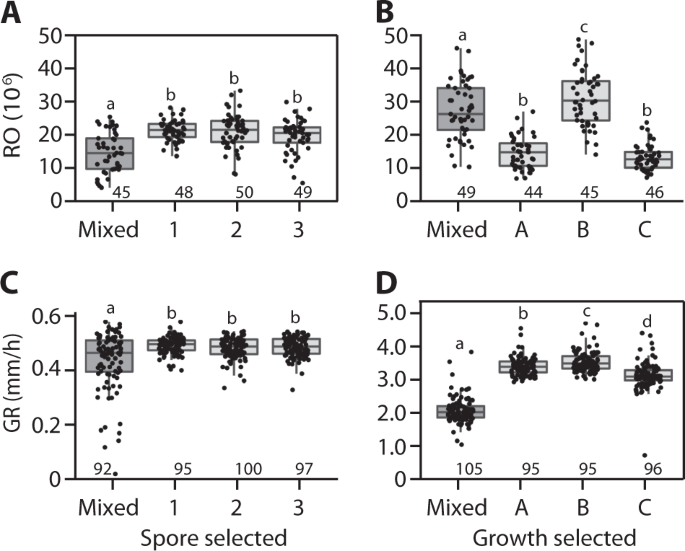Fitness is the relative contribution of one genotype, relative to that of another. But how does one measure and quantify this? In fungi, a variety of measures (“fitness proxies”) are used. Growth rate of the mycelium is a popular one, because it can repeatedly and consistently be measured; but does it reflect fitness? In some species under laboratory circumstances it probably does, such as in for example in Aspergillus. In the lab, the growth rate of the mycelium reflects the spore production which is linearly correlated (Gifford & Schoustra 2013). But can this be generalized?
In a large experiment with Neurospora crassa published in ISME Journal
with Jenni anderson as lead researcher we showed that two important fitness measures growth and spore production do not translate to one single fitness measure. From 20 highly diverged N. crassa strains, Jenni generated a large genetically mixed population that were used as the start of an experimental evolution experiment. The strains were selected either for increased growth, or for increased spore production and afterwards their response to selection as well as the response in the not-selected trait was measured. The strains selected for increased spore production showed an increased response in growth, but this was not universal. Importantly, measurements in one environment, were not predictive of measurements in an alternative environment. Phenotypic plasticity changed the relative rank of strains in different environments and these differed for growth and spore production.

Next to the phenotypic analyses, sdRAD sequencing of a large number of parental and evolved strains showed that selection on the strains was mostly dependent on a limited number of clones that quickly swept to fixation, and that these clones, dependent on the type of selection depended heavily on a limited number of ancestral types. Our experiments clearly show that fitness is heavily environmental dependent, and that the traits ‘growth’ and ‘spore production’ are uncorrelated traits.
Things get even worse when one takes into account that fitness is not only determined by asexual reproduction, but in most organisms depends at least for part (an important part! Nieuwenhuis & James 2016) of the lifecycle on sexual reproduction too. Until we better understand what fungi do in nature and when we are able to study them in their local environment,, obtaining fitness measures in fungi will thus remain very difficult.